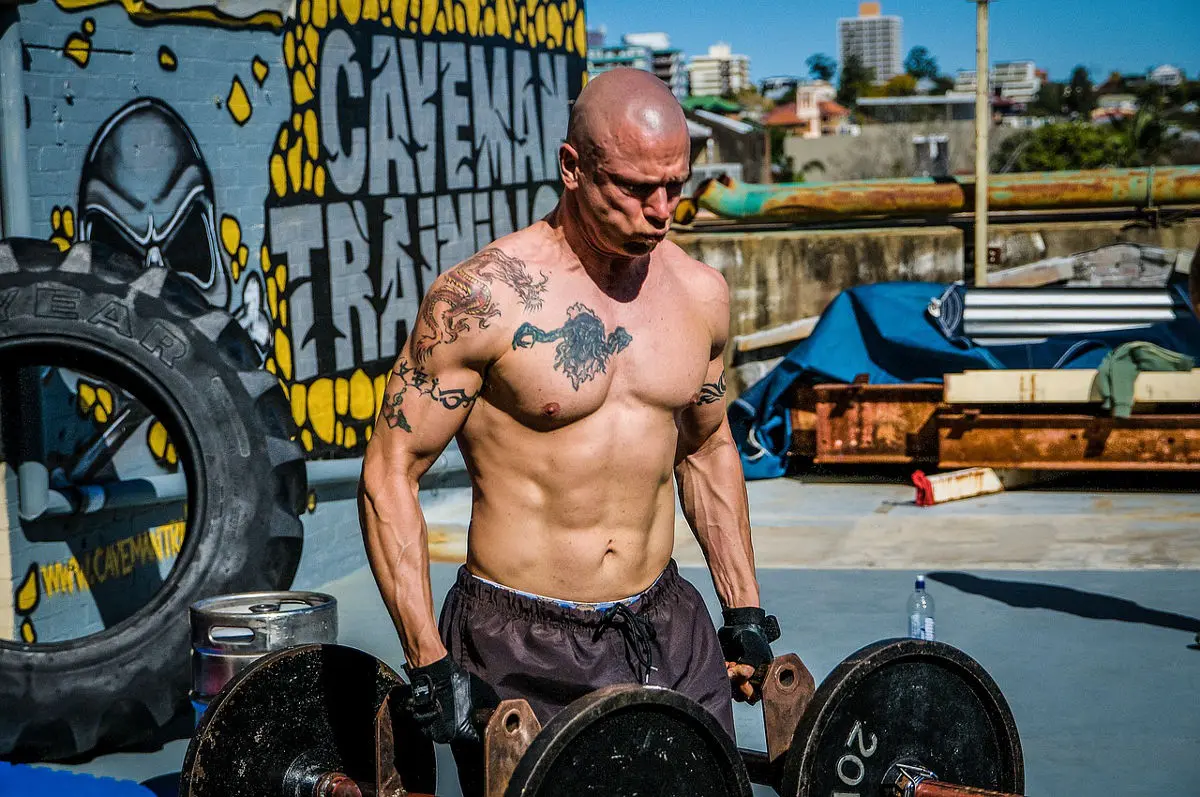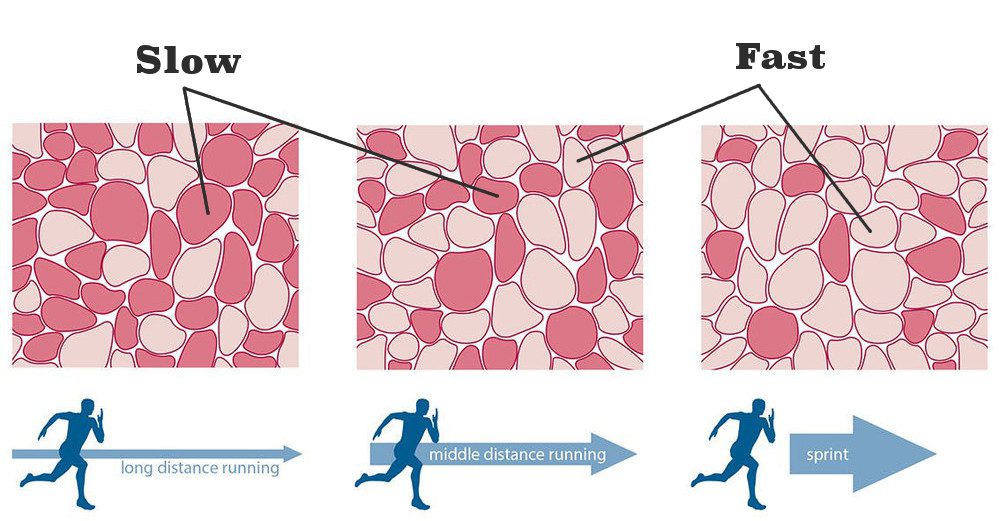
The best online fitness resource you'll ever need. We filter out the BS to ensure you meet your health and fitness goals!

The best online fitness resource you'll ever need. We filter out the BS to ensure you meet your health and fitness goals!

You may be surprised to learn that the majority of people consider stamina and endurance the same, using the terms interchangeably to convey the same thoughts.
When training you should attempt to build up both your stamina and endurance as they contribute to the efficiency of your body in getting work done, but even though they are related, they are also very different.
So what is the big difference between stamina and insurance, you ask? Depending on your particular sports discipline one is undoubtedly more important than the other for you, although the fittest and highest performing athletes strike a good balance between the two.
So let’s check out exactly what the differences are between the two, shall we?
To put a definition on what stamina is, it is said to be the ability of your muscles to work near maximal capacity for a period of time. This makes strength training at its core a stamina based activity, as you will be using near maximal effort to move a loaded bar (dumbbell or other tool) a number of time to accomplish your repetition targets, for instance.

So, let’s say for example that you are able to bench press a barbell equipped with two small 10 pounds weight plates for six reps. Your training buddy is able to do a barbell equipped with 45 pound plates for 12 reps. Essentially, your training partner displays greater stamina as he is able to move more weight over a longer period of time (more repetitions).
It is important to note that stamina involves maximal or near maximal effort for as long as possible (AKA going all out). There are individual differences based on genetic factors which explains why some people have higher stamina levels from the get-go, but the good news is that you can also train to effectively increase your stamina as well.
Also worth mentioning is the fact that a failure of stamina is not the same as poor endurance, as stamina reflects muscular failure above all else. Stamina also involves a neuromuscular component, as the brain and spinal cord must be able to convey signaling to initiate strong muscle contractions. Overtraining affects the CNS (central nervous system) causing weakened nerve transmission, and is reflected by the inability to maintain the same intensity (or stamina) for a period of time.
This particular statement is important for reasons you will see below when discussing endurance.
Have you ever taken part in a marathon? Not many people have, as they sorely lack the endurance it requires to successfully complete one. If you have ever looked at Olympic marathon runners, you would have noticed fundamental differences in the way they look compared to athletes such as bodybuilders.

Marathon runners are slender, whereas bodybuilders are large and bulky. Put the two of them in a marathon, and the bodybuilder will eat the marathon runner’s dust. Why is this so? Does it mean that strength athletes are lazy, unfit muscle heads?
Not at all. Rather, revisiting the statement above that we said would be very important, it ties into the type of failure experienced. Strength athletes generally train muscles to become capable of progressively moving a larger load, over relatively short periods of time.
Marathon runners, on the other hand do not care about achieving maximal intensity. Yes, that needs to be said again – maximal intensity is not of primary importance when attempting to build endurance. This is why you can’t compare apples to oranges, or in this case endurance athletes to strength athletes such as bodybuilders or even sprinters.
Endurance training works primarily to improve cardiopulmonary efficiency, or the ability to not lose your breath over the course of activity being performed. It is virtually impossible to maintain a sprint over a distance of several miles, but maintaining low level activity is quite doable.
Yes, this is actually an important aspect of successfully training for the discipline you are involved in. Muscle fibers are generally classified into one of two types, namely type I, also known as slow twitch, and type II, referred to as fast twitch.
When we perform an activity, the body almost always recruits fast twitch muscle fibers first. These types of muscle fibers allow for explosive movement, which is why when fresh into an exercise or activity you are able to perform it much more easily, than compared to several minutes later.
Their explosive nature can be attributed to their ability to generate the maximum amount of force and rapidly contract, depending heavily on stored muscle glycogen (stored form of glucose) to do this. If you are desirous of testing the limits of your Type II muscle fibers in the quest for hypertrophy, short burst intense exercise is the way to go. This fiber type also translates most significantly to your overall stamina levels.
A good analogy of the way they work is to think of the nitrous you have probably seen equipped to cars in the Fast and Furious movies. They are capable of yielding massive bursts of speed and power, cannot be used frequently and are rapidly depleted of their energy source.
Strength training, including weightlifting and sprints assist with training of fast twitch muscle fibers, in turn improving your stamina. Fast twitch muscle fibers primarily use glucose as an energy source (glycolytic energy production), though specific subtypes can also make use of small amounts of fatty acids for fuel.

Slow twitch muscle fibers are in for the long game, usually recruited a few minutes after activity has begun and your fast twitch muscle fibers have begun to fatigue. Slow twitch muscle fibers do not possess the explosive potential of the other type, which is why you just can’t seem to move the same loaded bar with the same speed, number of repetitions or fail to move it altogether a few sets into your workout, or if attempting several sprint cycles.
Slow twitch muscle fibers do not require as much energy per second compared to fast twitch muscle fibers, and are a sort of “energy saving” maintenance muscle. They will allow you to perform at a lower intensity for an extended period of time before becoming fatigued. Slow twitch muscle fibers are also very efficient at using fat for fuel (oxidative energy production)
On another note, fast twitch muscle fibers are the ones that yield hypertrophic growth (owing to their larger cell diameter), which is why bodybuilders, Olympic sprinters and other strength athletes are capable of building big muscular bodies, while endurance athletes have longer, slender muscle heads (with smaller individual diameters). Slow twitch muscle fibers are also recruited involuntarily and unconsciously throughout most of our waking hours, to accomplish tasks such as walking or even maintaining posture. This also explains why they are highly resistant to fatigue, or your body would take a beating from staying upright or even casual walking.
If you are a strength athlete, the good news is that you are likely improving your stamina every time you workout, even though these changes may be on a minuscule level that only appear after several weeks of training. This is especially true if you are a seasoned athlete who has been working out for many years, coming a long way from where you were and are close to your natural genetic limit.
If you are new to working out; weightlifting or high intensity sprinting, specifically, you will likely notice massive improvements over the first year or so, being able to increase stamina by well over 100% during that period of time.
A good approach to training for stamina using weighted loads is to progressively overload the muscle in question. This means, for example, using two variables as an indicator for linear progression. To simplify this:
If you start performing barbell curls with an unloaded Olympic size bar (which is approximately 45 pounds) and can only perform four repetitions, do not try to add weighted plates to the bar until you can easily perform 12 repetitions. Then, and only then should you attempt to add a small amount of additional weight to the bar, with the goal of achieving 12 reps once more before increasing the weight again.
This approach of using the number of repetitions first, and amount of weight as a secondary factor is quite effective in building stamina in at least one specific muscle group. Compound movements (which are those exercises that utilize more than one muscle group, or are multi-jointed) can increase stamina in multiple muscle groups at once, and are advisable entry-level movements to quickly accrue increased stamina over the entire body.
While we previously mentioned that endurance is not particularly interested in exerting maximal effort, there are in fact several endurance subtypes, of which stamina could technically be classified as one.
For instance, while you are progressively building stamina, you are also indirectly improving your endurance, as your cardiopulmonary system improves its ability to supply oxygen-rich blood in a fashion to match the increased loadbearing potential of your muscles. You may not like to admit that your endurance is increasing, but this isn’t a bad thing on the grander scale of things.
But back to endurance – the quickest way to directly improve your endurance is to perform cardiovascular exercise. Low to moderate intensity steady state cardio is the de facto gold standard for improving endurance, though with new techniques such as Tabatas and HIIT spinoffs growing in popularity, other subtypes of endurance training such as anaerobic endurance, and even speed endurance are also being made use of.
But just because you are trying to improve your endurance in the classic sense of the word does not mean that you can “take it easy”. If you can leisurely hold a conversation without having difficulty breathing than your current cardiopulmonary endurance levels exceed the challenge you are bringing it, and you need to increase the difficulty.
It is for his exact reason that adding in a few well-timed high intensity interval training cardiovascular sessions can do just the trick for upping things a notch.
To summarize endurance training in a nutshell, your goal should be to ultimately be able to handle increasingly difficult training intensities by constantly improving the efficiency at which your body can supply oxygen and nutrient rich blood. This will, of course, also lend itself to improving your stamina as well. Strength athletes – don’t be scared of adding a bit of endurance training into the mix, it will only benefit your work out in the long run.
Is such a thing possible? It really is, and it’s not as difficult as you may think. If you think about it, stamina and endurance are not exclusive of each other; you will inevitably improve the other while training one. But what if you could just utilize a movement that can tackle both with similar intensity levels, simultaneously?
Ladies and gentlemen, introducing the Farmer’s Walk.
The farmer’s walk is extremely simple, and can be considered even primitive. However, its efficiency in improving strength, stamina, endurance and even posture is unmistakable. Not to mention the fact that it is one of the few movements that anyone can master without practice and what you have is a serious contender for the number one overall exercise of all time (sorry squats, get down off the podium!)
The execution of the farmer’s walk involves basically hauling loaded weights (dumbbells or kettle bells preferably), and with an upright spine taking slow deliberate steps for extended distances as much as you can tolerate.
If you are new to performing this exercise, feel free to take a day or two holding very light weights in order to feel the movement out. However, after this brief initiation, the goal is to support as much weight as you can safely handle and for as long as possible (distance and time).
The farmer’s walk targets many major muscle groups, including hamstrings, glutes, quadriceps, trapezius, rhomboids, erector spinae of the lower back and many other supporting muscle groups.
Farmer’s walk also helps improve your balance, making it helpful for unilateral movements or for correcting significant muscular imbalances or asymmetry.
The beauty about the farmer’s walk is the fact that it also translates to many aspects of life outside of the gym, preventing the likelihood of developing back pain from poor lumbar support, or acting as a useful metabolic furnace to burn calories in the event that you need to take a break from periodization activity.
At the end of the day, your goal should be to improve the functionality of the body, and not merely its aesthetic appeal.
So what should come first, the chicken or the egg? Or in this case- stamina or endurance? The answer is, it depends. If you are severely out of shape and can scarcely maintain your breath, building endurance may be easier as it can be done at low intensities until your cardiovascular fitness improves. Diving headfirst into weighted stamina training may be very taxing in such a case.
However, if you possess moderate endurance already, feel free to work on increasing your stamina. Farmer’s walks can be incorporated into your workouts early on as well so that you get the best of both worlds!